|
On day 4 we took a different, higher route out of Namche, straight up 500m then down to the village of Khumjung at 3800m, the same height as the Aiguille du Midi where we spent time acclimatising before the trip. The views across to Everest and Ama Dablam were stunning, we stopped for a spot of golf on a lovely grassy plain and took many happy photos of us all. In Khumjung we visited the school that Sir Edward Hilary established in 1961 and a monastery which houses a real yeti scalp! It looked more like part of an old fur coat, but it’s amazing how many of the Sherpas and other locals truly believe in the existence of yetis. I have to admit that I did get a little spooked by strange noises when using the toilet in the middle of the night. The stars were clearer here than anything I’d ever experienced, if you were brave enough to venture out of the tent during the night. Day 5 took us back down to the river and then up again. The route often did that, so despite little altitude gain overall that day we still went down and up 600m which got the heart and lungs pumping. We visited the monastery at Tengboche which marked the one cut-off point at the top of a climb during the race. There was a lot of chanting, horn-blowing and tea-drinking by the monks, but it was the smell of our collective cheesy feet that drove us out of there pretty quickly! We were amused to hear that the monks ski here in the winter, on homemade skis, in their robes. The descent through a rhododendron forest was beautiful and we made camp in Deboche in the grounds of a lodge alongside the other camping group. We were excited to find a toilet with a seat and the lodge was comfy and warm for mealtimes. Everybody seemed to be on good form. The stars were gorgeous again overnight and we awoke to wonderful views of a misty Ama Dablam with huge shadows being cast by the rising sun. We met the first of our regular dog companions (Buster) and I shared my boiled egg with him. The dogs all looked like they needed a bath, but were very friendly and didn’t appear to belong to anybody, popping up randomly en route. Day 6 took us over the landmark 4000m and up to 4300m in Dingboche, but it was a nice gradual ascent. This took us above the tree line, leaving the landscape barren and we also sighted our first big, hairy yaks, who can only survive about 3000m. Some of the girls were suffering from colds and dodgy stomachs today, but still no major altitude sickness issues. However it certainly felt colder, the air thinner and the yak dung burnt in the lodges filled the air with an acrid smoke. Overnight we had thunder, rain and snow and those that had diligently washed their undies the night before found them frozen solid on the lines when they woke. The morning was stunning and we could now see that we were surrounded by huge, snowy mountains which were shrouded in mist when we’d arrived. Day 7 was a rest day at Dingboche, which again meant no rest but a trek and run around a loop that we would have to do on race day. It was good to have a run again, although the terrain underfoot was not too enjoyable and the thought of having to run up and downhill here mid-race wasn’t appealing. We had the afternoon free and trekked up to a chorten, towards another part of the race route, listening to strict instructions from Ricky not to explore the other side of the valley. I’m not sure if there were yetis living over there, but there were a few signs up around town showing pictures of trekkers that had recently gone missing… There was a camera crew following a Brazilian team doing the race and a few of us did a brief interview for them. Our doctor took our blood pressures and gave his usual advice of “drink more water” if anything seemed abnormal. From here onwards, the weather started to get progressively worse. Scorching hot sun was interspersed with a cold, driving wind that seemed to come out of nowhere and we started wearing more layers for trekking and at night. The days often began clear and bright, but a cold mist and wind rolled in during the afternoon and evenings. Day 8 was exactly like this and we left Dingboche to gain another 600m in altitude. The uphill was slow and gentle, over sparse, rocky plains, along the side of a glacial valley. Buster the dog had been joined by his friend Shakira and they merrily trotted along beside us. We dropped down to the river and stopped for lunch, then climbed on up the valley. We passed through an area covered with memorials to those that had lost their lives on Everest, strewn with prayer flags. It was emotional reading the memorials and we took time to walk around them. We realised we were at the same height as Mont Blanc which was pretty exciting for us Chamonix-based folk. Lobuche at 4900m came into view soon after and it was clear that we were getting into the high mountains now, with only a couple of lodges in the village. Most of us started feeling the affects of altitude today. It feels like you are slightly drunk and hungover at the same time and you have to do everything really slowly to avoid getting out of breath. Your brain struggles and it’s hard to think straight due to the lack of oxygen. At 5000m there is 45% less oxygen than at sea level. Lots of people had started coughing and taking mild painkillers or anti-altitude sickness medication to try and fend it off, but personally I preferred to drink as much water as possible and hope that my head sorted itself out. Luckily for me, that worked. Day 9 was the toughest day yet by a long way. I awoke at 2am to heavy snow and then at 5.30 the Sherpas started shaking our tents to dislodge the 15cm of fresh snow. Many of our team had not brought footwear suitable for such weather, which was unusual for this time of year. We trekked for 3 hours in a snowstorm, through deep snow, up to Gorek Shep at 5190m and it was exhausting. We arrived at the lodge there cold and wet, with many of our team really suffering from the altitude. There was nowhere to dry our wet clothes until they lit a small stove in the evening and the toilets were beyond disgusting. However for us tomorrow was a big day, the trek to Everest Base Camp, so we went to our tents with smiles on our faces and slept well. On day 10 the snowstorm was still raging, so the trek was postponed until after lunch. We got kitted up in our cold and wet weather gear, looking like we were about to trek to the Antarctic, not to the start line of a race. The route to EBC is a single file track along an undulating ridge with dangerous drops and a traverse across a glacier through an avalanche/rock fall field. When we got to this field a few boulders fell, so we were very lucky to spot them and not to have been hit. As we stood there in deep snow in our wet running trainers, having slipped and fallen several times each, we wondered just how we were going to ‘run’ this in two days time! Upon arrival at base camp (5390m) we were shown to our tents and told to be careful where we stepped. We were essentially camping on a glacier and there were holes and crevasses everywhere. Tents were pitched on slopes and hilltops and looked like you would just roll out of them! We got into our tent to find everything was very wet and cold, due to the melting snow soaking through the bottom. Even getting to the dinner tent or toilet was an enormous effort. We were told that the storm was getting worse and that we should wake up every hour to knock the snow off our tents, a) to stop us suffocating, and b) to stop the tent from collapsing. That was not going to make for a good nights sleep! After a very scary night with a few of us having panic attacks from lack of oxygen, we were dug out of our tents by the Sherpas and trudged over to breakfast in snow up to our thighs. This alone was so tiring at this height. As we ate our breakfast we could hear avalanches rumbling all around the valley. Consequently, the race organisers decided that, due to the conditions, the race would not be able to start from EBC this year. After more snow, the sun was due to come out that afternoon, causing the fresh snow to melt and making the avalanche risk on the trail extremely high. We had to evacuate right now! We returned to our tents to pack, having been told that our kit bags may not make it back to Gorek Shep before the race, thus deciding to carry or wear as much as possible. Knowing the avalanche risk, the state of the path we would have to walk across, the fact that we had inadequate kit, no ropes or crampons and that no helicopter could get to us if something was to happen, we were terrified. I can honestly say that I have never been so scared in all my life, shortly before and during the first hour of that trek. Nobody had given any instructions, Ali & Sam got separated from the rest of the group, people were struggling to carry their own kit, the snow was still pelting down, we could see avalanche debris across our walking path and people were stopping to take photos in the middle of it all! After 2 ½ hours we were utterly exhausted, inhaling chocolate bars to keep going. Due to the stress, panic and confusion, we nearly all forgot to put sun cream on. Despite the whole episode being played out in a blizzard, with zero sun, several of us managed to get the worst sunburn on our faces that we have ever experienced. We arrived back in Gorek Shep, happy to be alive but with painful, swollen, burnt faces. And all of this the day before the race on what was supposed to be a rest day. At this point, we started to feel angry as it became apparent that safety was not first on the race organisers’ agenda. Surely they had known about the weather forecast before we even left for EBC the day before? Why had they risked taking us all up there? Were they more bothered about trying to conserve the start line and title of the ‘highest’ marathon in the world than our safety? If these conditions happened before a race in Chamonix, we knew that the race would be cancelled or at least re-routed.
We spent the afternoon discussing as a group what was best to do as we were concerned that even the new race route was dangerous and avalanche-prone. Whatever we did, we’d have to get down there on foot at some point, but should we even race? Travel today was impossible as we were informed there had been an avalanche on the route, i.e. the route we were due to travel tomorrow. We sent messages to people we knew that had trekked the area, asking their advice. In the end we decided to run in groups of 3 until we got through the high risk area. At this point we just wanted to get off this mountain and that was the only way we were going to do it! We were given beds in the lodge for the night, our amazing porters and Sherpas worked themselves to exhaustion to bring all of our kit back, many of them doing two trips from EBC and we went to bed scared for a second night, worried about what the next day held for us. There is no way we would consider hiking or running in such ridiculous conditions in Chamonix. This was supposed to be fun and a challenge, but we were not prepared for such dangerous circumstances. What on earth were we doing here? Sam & Helen x
1 Comment
|
Archives
October 2015
Categories |



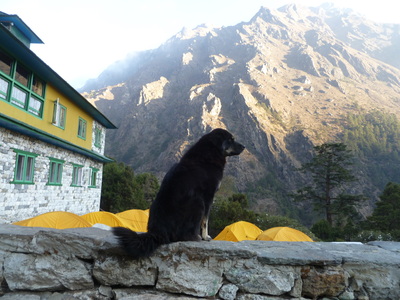




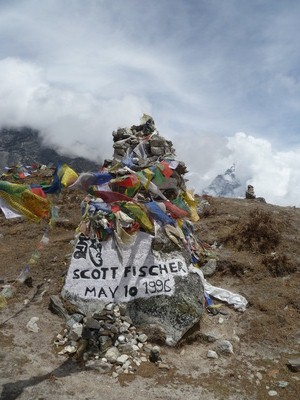
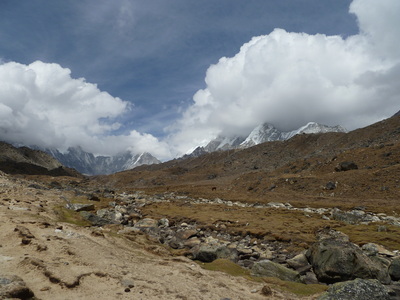


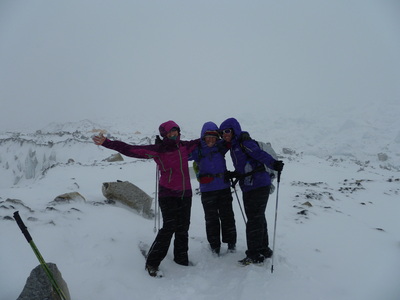

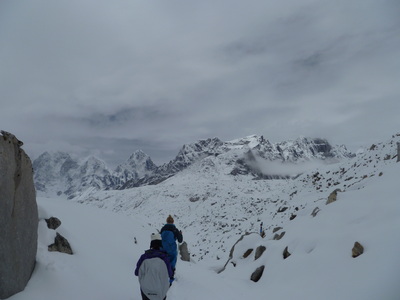
 RSS Feed
RSS Feed
